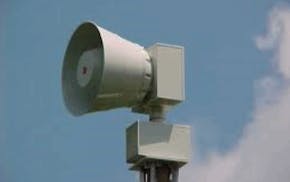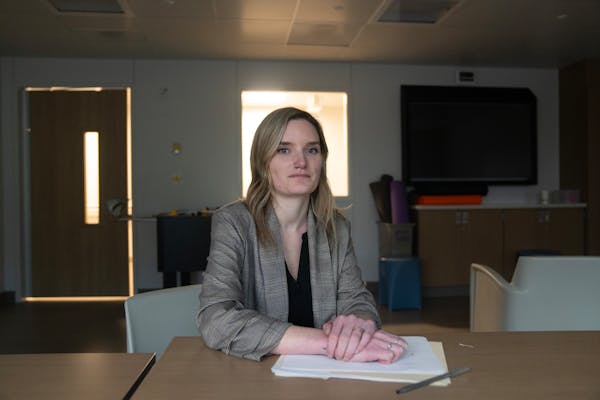Minnesota teens struggling with drugs or alcohol have few options for help after several treatment centers closed last year.
Clinics that prescribed opioid addiction medication shut down in Duluth and Inver Grove Heights in the fall, as did a decades-old residential treatment program in New Ulm.
And as 2023 came to an end, so did a nonprofit's drug treatment program for mothers at a St. Louis Park housing complex.
Addiction treatment providers stopped services in at least 10 Minnesota locations in 2023, often citing a lack of staff and perilously thin margins. Others scaled back.
Program closures in 2023 surpassed any year that several providers said they can recall, and the closures are coming as deadly overdoses and demand for services remain high. On average, more than three people died every day in Minnesota from an overdose, according to Minnesota Department of Health data on confirmed deaths in 2023.
"It's been a nightmare," said Jack Benson, executive director at the metro-area On-Belay House Anthony Louis Center that serves teenagers. "We're seeing a lot more deaths."
The state is hearing about "unprecedented degrees of challenge" in addiction treatment, as well as other helping professions such as nursing and mental health care, said Department of Human Services Assistant Commissioner Eric Grumdahl. It's hard to find and hang onto workers willing to do the challenging jobs, state administrative requirements are burdensome and companies are still limping from pandemic setbacks and inflation, he said.
Then there's the state's reimbursement rates. A recently released state study showed the rates the state pays providers do not line up with what they are spending to do the work. DHS officials recommended widespread increases, and both Democrats and Republicans stressed the need for rate changes at a January hearing.
But spending in the upcoming legislative session is expected to be minimal and a budget deficit might be on the horizon. That could mean organizations will have to wait for rate increases.
However, Grumdahl noted the state is still distributing some of the roughly $200 million legislators approved last year for behavioral health. He said portions of that money are going to help start up or expand substance use treatment, including family treatment centers, culturally specific programs and harm reduction measures to reduce fatal overdoses.
"This is not a simple solution. It's a really complicated problem that is, in many ways, decades in the making," he said. "So rates is a part of that, administrative simplification is a part of that, removing the barriers to licensure and entering the field is part of that."
Overdoses feared amid service shortages
Benson has heard about several teens who died from overdoses in the past year as they waited for a treatment center bed to become available.
While some companies did open or expand facilities in 2023, providers said they believe more places have closed. Benson's organization shut down five locations in recent years, but reopened one last year. Meanwhile, closures of other companies' adolescent facilities in Mora, Burnsville and Roseville last year have funneled more people to their waitlist. He said working with teens comes with additional licensing and staffing requirements and low state reimbursement rates make it "very, very difficult."
It's not just adolescent centers shutting down: Providers offering various levels of service – from residential inpatient treatment to outpatient therapy services to clinics offering medication-assisted treatment – have closed their doors.
Organizations are also mothballing programs, having staff take on more cases or selling real estate to stay viable, said Brian Zirbes, executive director of the Minnesota Association of Resources for Recovery and Chemical Health. He said the association surveyed more than 120 of its members last summer and found a number of them were "on the ropes."
"They have been scaling down, scaling back to stay alive," Zirbes said.
It's difficult to get an exact count of how many substance use treatment providers closed in Minnesota over the past year. DHS licensing data show that among hundreds of licensed providers, dozens closed last year and there was a substantial drop in treatment providers' overall client capacity. But the numbers are flawed.
Some agencies DHS listed as closed told the Star Tribune they were still fully operating, while others listed as having active licenses have closed. The data only reflects closures reported to the agency, but providers are not obligated to report a closure, according to a DHS spokesman, who said they also mark a place as closed when a provider fails to pay a renewal fee at the end of the year.
The state licensing data doesn't reflect a closure at one of Cindi Naumann's businesses. She said she and her business partners at Freedom Center and New Freedom have spent years providing drug and alcohol treatment to rural communities in central Minnesota with the goal of "literally trying to save lives."
Last year they closed two locations, an outpatient center in Cambridge that was serving more than 100 clients a year prior to the pandemic and a 15-bed facility that offered housing and treatment in Princeton. They have another facility left in Princeton, she said, but it has a waitlist.
"That was very, very sad for us," Naumann said of the closures, noting that business was hampered by stagnant reimbursement rates, a lack of staff and lost income from the pandemic. "Once the pandemic hit and since then it's just been impossible to keep things staffed and to move forward."
Providers in rural communities said having fewer facilities means people have to look harder and drive farther, or must piece together sparse public transportation options to get the help they need.
It's critical to seize the moment when someone is ready for treatment, and long distances and waitlists get in the way, said Marti Paulson, CEO of Project Turnabout in western Minnesota. Paulson, who is president of the Minnesota Alliance of Rural Addiction Treatment Programs, said in her 20 years in the business she's never seen anything close to the closure levels of 2023. She worries about the consequences.
"If you are in active addiction," she said. "A waiting list is asking for overdose."

Hennepin County Attorney inks contract with D.C. law firm to prosecute trooper Londregan case

From Vietnam medic to peacenik, proud veteran
University of Minnesota president recommends renaming Nicholson Hall

